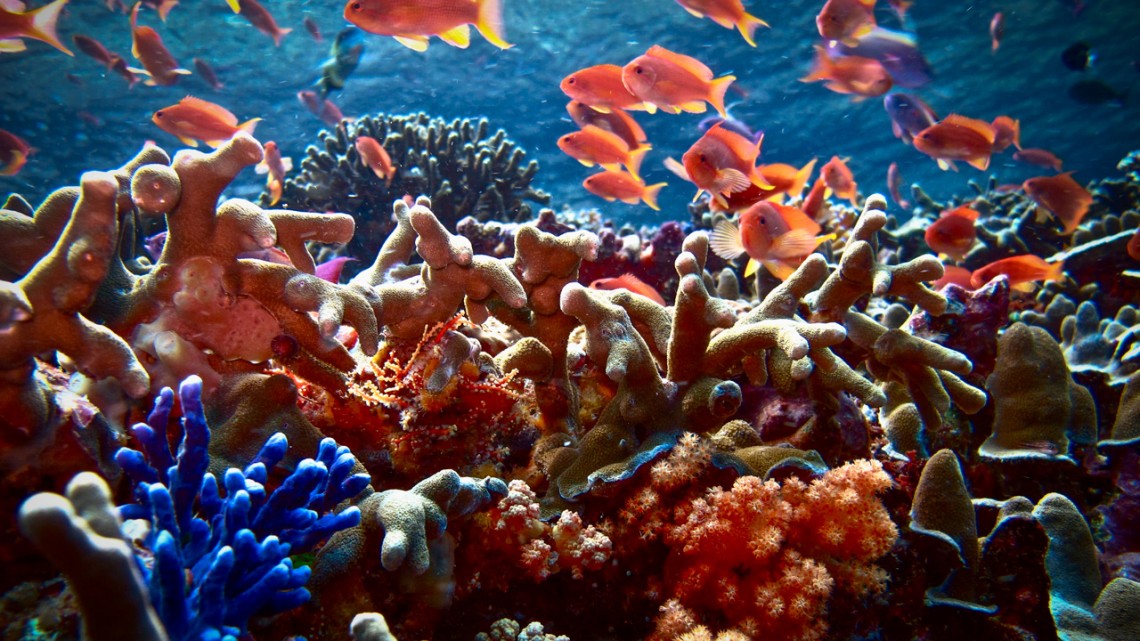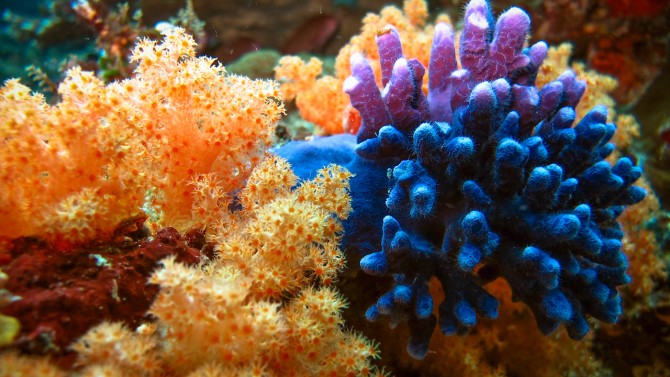
As global warming increases disease, healthy corals, pictured here, are at greater risk for ecological impacts.
Disease trends in sea creatures herald oceanic changes
By Blaine Friedlander
The health of Earth’s oceans is rapidly worsening, and newly published Cornell-led research has examined changes in reported diseases across undersea species at a global scale over a 44-year period.
The findings, published Oct. 9 in Proceedings of the Royal Society B, show that long-term changes in diseases coincide with recent decades of widespread environmental change.
Understanding oceanic trends is important for evaluating today’s threats to marine systems, and disease is an important sentinel of change, according to senior author Drew Harvell, professor of marine biology in the Department of Ecology and Evolutionary Biology. The researchers examined marine infectious disease reports from 1970 to 2013, which transcend short-term fluctuations and regional variation.
“Disease increases and decreases can both be bad news,” said lead author Allison Tracy, Ph.D. ’19, who studied with Harvell. “The long-term changes in disease that we see here may result from anthropogenic pressures on plants and animals in the ocean.”
The scientists examined records of corals, urchins, mammals, decapods, fish, mollusks, sharks and rays, seagrass and turtles.
For corals and urchins, reports of infectious disease increased over the 44-year period. In the Caribbean, increasing coral disease reports correlated with warming events. It is widely known that coral bleaching increases with warming, but Harvell said they have established a long-term connection between warming and coral disease.
“We’ve finally linked a coral killer like infectious disease to repeated warming bouts over four decades of change,” she said. “Our study shows that infectious disease reports are associated with warm temperature anomalies in corals on a multi-decadal scale.”
Disease reports decreased over 44 years in fish and elasmobranchs (sharks and rays). Tracy said a decrease in disease in fish is not necessarily good news because it could be due to overfishing and may be a sign of ecological disruption.
“Diseases are important for keeping marine ecosystems healthy, as parasites play an important role in regulating populations and cycling nutrients, and are themselves part of biodiversity,” she said. “It’s possible that many fish populations are now too depleted to support normal levels of disease, accounting for the long-term decrease in disease reports.”
These results improve understanding of how changing environments alter species interactions, and they provide a solid baseline for health of marine life in the period studied. “These years precede the big heat waves of 2015, 2016 and 2019 that are expected to trigger more outbreaks,” Harvell said.
“In detecting these swings in disease, our results offer a rare glimpse into long-term trends and link the changing marine environment to disease risk,” Tracy said.
Said research colleague Scott Heron of James Cook University in Australia: “Where global warming is increasing disease, like in corals, we’re at risk of even greater ecological impacts, and the need to act on the causes of human-induced climate change is urgent.”
In addition to Tracy, Harvell and Heron, co-authors of “Increases and Decreases in Marine Disease Reports in an Era of Global Change” include researchers Madeline Pielmeier ’17 and Reyn M. Yoshioka ’14. The research was funded by a National Science Foundation Ecology and Evolution of Marine Infectious Diseases grant.
Media Contact
Get Cornell news delivered right to your inbox.
Subscribe

